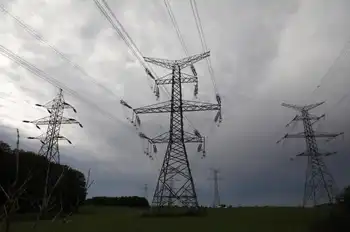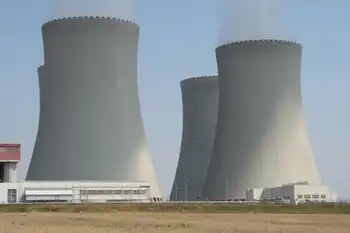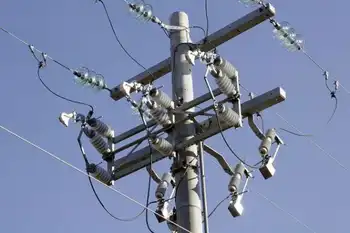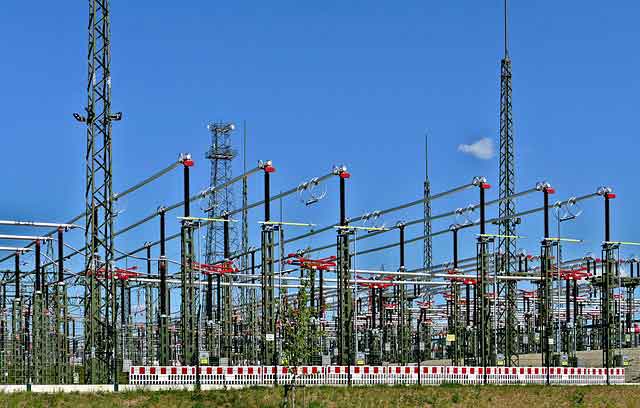Solar CEOs gather for conference and exposition
By Business Wire
Electrical Testing & Commissioning of Power Systems
Our customized live online or in‑person group training can be delivered to your staff at your location.

- Live Online
- 12 hours Instructor-led
- Group Training Available
Typically among the most well attended segments of the Solar Power Conference, the CEO Panel is expected to attract an audience of 3,000 registered conference attendees.
The 2008 CEO Panel takes place as two segments – one on market development and the other on driving down costs – on Wednesday, October 15.
The Solar Power Conference & Expo is the largest solar industry event in the Americas, expected to attract more than 12,000 professional attendees from 70 countries. Attendees will frequent more than 60 conference sessions relating the latest developments in technology, markets, policy and finance, while the international exhibit floor will feature more than 400 exhibitors from every corner of the solar industry.
Reflecting the urgency of increasing renewable energy in the nation’s discourse on energy, this year’s CEO Panel brings together industry leaders for two separate but related discussions – one on market development and another on reducing technology costs.
“The CEO Panel is designed to offer conference attendees a first-hand account of diverse perspectives from the solar C-suite,” said Julia Hamm, executive director of SEPA and chair of the Solar Power Conference & Expo. “We vary the participants each year to reflect the continued evolution of the solar industry and the topics that are most relevant to our audience. This year we are conducting two separate discussions on key industry challenges – continuing significant annual market growth and lowering costs. We look forward to the conclusions drawn from this year’s CEO Panel.”
“In the past year the American solar industry has pressed forward with landmark technology innovation and capital expansion, from materials and process breakthroughs to major power plant and factory construction,” said Rhone Resch, president of SEIA. “Increasingly the U.S. government has understood the value the solar industry brings to this country, in terms of job creation, investment dollars and environmental benefits. We look forward to hearing this year’s CEO Panelists recount lessons learned in the past year, both from here in the U.S. and abroad. Their stories underscore the solar industry’s pivotal role in the future of the energy industry, and that the right Federal legislation will guarantee that the future of energy takes root right here in America.”
CEO Panel participants echoed the urgency felt by many in the industry that solar power is a key component in the reinvention of our energy infrastructure.
“The cost of solar power has the potential to come down over time,” says Jim Rogers, Duke Energy chairman, president and CEO. “As it does, we want to blend solar, other renewables and increased energy efficiency with our existing coal, natural gas and nuclear generation. Using all of these fuels is the best way for our industry to build a bridge to a low-carbon future.”
“Bringing down the costs for photovoltaics is essential for the future of our industry. If we manage that, we can make photovoltaics mankind´s main energy source – and that is what we have to do,” commented Anton Milner, CEO of Q-Cells. “The Solar Power 2008 CEO Panel is a very good platform for industry leaders to reach a common understanding of the necessities related to this overwhelming target.”
“The stakes for advancement in our industry have never been higher, as solar power has moved to the forefront of international consciousness as a potential solution to some of the greatest challenges of our times,” said Lyndon Rive, SolarCity’s CEO. “This solar industry has never seen greater innovation, be it technical, financial or operational, and Solar Power 2008 should reveal a roadmap to further development that will establish renewable power as the primary source of the world’s energy in our lifetimes.”
In addition to the CEO Panel, Solar Power 2008 will feature opening and closing keynote sessions, more than 60 breakout conference sessions, 400 exhibitors and countless industry networking opportunities. Solar Power 2008 will encompass the complete range of solar energy technologies, including photovoltaics, concentrating photovoltaics, concentrating solar power, solar hot water, and space heating and cooling.
A new online registration function will allow professionals to filter and sort through exhibitors and session content to create customized personal floor plans and itineraries. These online tools will allow users to make the most of their time in San Diego, navigating the large show floor and comprehensive conference agenda with ease.
Another unique feature of this yearÂ’s event is an expanded focus on consumers. Solar Power 2008 Conference & Expo, a business-to-business event, has partnered with the non- profit California Center for Sustainable Energy (CCSE) to coincide with San DiegoÂ’s annual Solar Energy Week. This combination creates a comprehensive, week-long schedule addressing both professional and consumer solar interests.
Activities for the public will include Family Solar Day on October 12, a public opening of the Solar Power 2008 exhibit hall on the evening of October 15, and the Tour of Solar Homes on October 18. San Diego Gas & Electric, the Utility Host Sponsor for Solar Power 2008, will also be promoting Solar Energy Week activities to both its commercial and residential customers.











